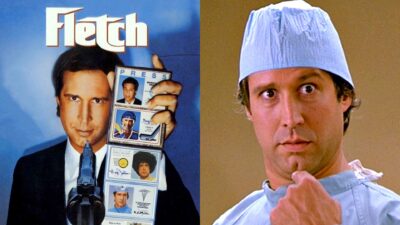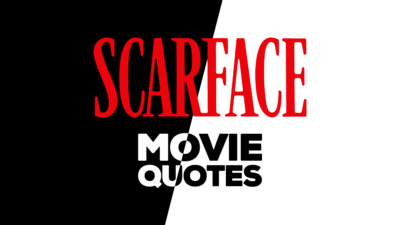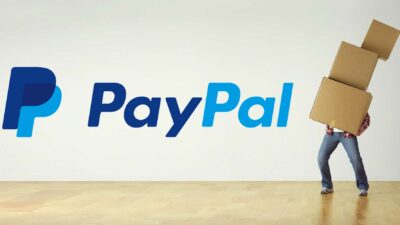There’s a lot of confusion with the difference between OTT and Connected TV (CTV), especially for advertisers. That’s right, OTT and CTV are not the same. If you thought they were, don’t worry. Here’s everything budget savvy advertisers need to know about OTT vs CTV advertising.
OTT And Connected TV Are NOT The Same
“OTT” is a very misleading and confusing buzzword. What’s the difference between OTT and CTV? Simply stated, OTT is a service and CTV is a device.
- What is OTT? – OTT is an acronym for “over-the-top” meaning video content delivered over the top of cable, satellite, and broadcast TV systems. That content can be delivered to your TV, but also to your smartphone, tablet or computer.
- What is CTV? – A Connected TV (CTV) is a TV that is connected to the Internet through either via its built-in Smart TV interface (Sony, LG, Samsung, etc.) or another device like a Roku, Xbox, Apple TV or Amazon Fire TV stick.
OTT Advertising Is A Blended Product With Cheaper Non-TV Inventory
Ok, now we officially know the difference between OTT and CTV. But what’s the difference between an OTT advertising campaign and a Connected TV advertising campaign? CTV is the premium product and OTT is the cheaper blended product.
Before we go into OTT vs CTV advertising details, let’s just think about some of the blended products in your local grocery store. Blended products are cheaper because they contain cheaper ingredients. A can of mixed nuts is cheaper than a can of just cashews. Blended whiskey is cheaper than a single malt. Red table wine is cheaper than wine made from a single grape. Make sense so far?
Digital advertising products, like pre-roll, can be blended too. OTT is like a can of mixed nuts. OTT pre-roll inventory usually contains mostly web and mobile pre-roll that’s mixed with a smaller amount of more expensive Connected TV inventory. That’s right, OTT pre-roll doesn’t deliver 100% of its inventory on a TV. The blended OTT product is cheaper because it mixes premium and cheaper ingredients together.
Unfortunately, how the term “OTT” is used in the advertising industry, is often improper or even downright deceptive. Inexperienced and sneaky salespeople will often imply that OTT is a “TV only” product when it’s not. As a result, many times advertisers think a digital TV pre-roll product when it’s actually a blend.
CTV Is More Expensive Than OTT For Several Reasons

Connected TV, or “Pure CTV” as it’s sometimes called, is a premium product. Connected TV pre-roll ads play on your internet-connected TV and are almost always unskippable. Audiences watching a Connected TV device are having an immersive “TV experience” and are typically sitting on a couch or lying in bed when they see your ads.
Popular subscription services like Netflix, Amazon Prime Video, HBO GO, and Disney+ are supported by subscription fees, not pre-roll ads. So advertising campaigns will never be displayed in those apps. But there are plenty of ad-supported CTV apps including FOX News, CNN, Pluto, HGTV, Lifetime, NBC and a slew of local media apps.
Common qualities of a CTV advertising campaign include unskippable ads, live inventory, and episodic content. As a result, CTV inventory is sold at a premium and the buyer should expect to pay a higher CPM for Connected TV.
Both CTV And OTT Advertising Campaigns Have Their Unique Advantages
Connected TV advertising is a great solution for TV advertisers that are already seeing success with their broadcast campaigns. CTV gives advertisers an opportunity to extend their messaging to cord-cutters and cord-nevers. At the end of the day, CTV is just TV that’s delivered through the Internet instead of cable wires, satellite dishes or broadcast antennas. And for the most part, CTV advertising inventory is unskippable, just like live broadcast TV.
Even though it’s a blended product, OTT advertising can still be an incredibly effective tool. People typically spend more time each day using their smartphones and computers than their Connected TV devices. So there’s a lot more pre-roll inventory available to buy on smaller screens. If ad frequency is a critical goal for your campaign, then OTT advertising can be a very effective tool. For example, political campaigns will probably want to use OTT vs CTV.
Also, one of the biggest drawbacks of Connected TV is the inability to click on an ad. If the goal of the advertiser is to drive clicks, then OTT advertising is probably a better solution than Connected TV.
Advertisers Should Try To Avoid Non-Transparent OTT Packages
OTT advertising packages are messy. Many times the sales rep won’t understand the OTT vs CTV differences. Advertisers should demand transparency when presented with a proposal for either OTT or CTV advertising. Demand a detailed budget breakout from your advertising partners that includes separate impressions for web, mobile, and Connected TV inventory. Each product should have its own inventory, pricing, and analytics. Advertisers have a right to know exactly where their budget is going and how the inventory on each platform is performing.
OTT Advertising Costs Can Be Deceiving

Here’s a list of typical CPM (cost per thousand) pre-roll advertising rates. These are rough ranges. There are a lot of variables that can impact pricing, including ad duration, buying in bulk, analytics access, skippable vs unskippable and premium inventory.
- Web Pre-Roll: $10-20
- Mobile Pre-Roll (GeoVideo): $16-$22
- Connected TV Pre-Roll: $38-$50+
- OTT Pre-Roll: $25-$30 ?????
And there’s the problem with a blended product like OTT. It’s hard to even assign a price range without knowing exactly how many impressions are being allocated to CTV, web, and mobile. So how much does OTT advertising cost? The answer is whatever the sales representative wants.
How Much Does Connected TV And OTT Advertising Cost? ... #OTTadvertising #CTVadvertising #OTT #CTV #AdvertisingLife #AdStreaming Share on XAlways Demand To See Your CTV Site Or App List
If you are paying a premium price for a Connected TV advertising campaign, then make sure you aren’t really being sold an OTT campaign. After your campaign has been running for a few days, ask to see the full site list of where your ads ran. If your ads only ran on CTV devices, then there should only be TV apps listed, not websites, and minimal to no clicks.
The Difference Between OTT Advertising vs Connected TV Advertising
When it comes to pre-roll advertising, web and mobile inventory are more plentiful and cheaper. Connected TV advertising is a premium and more expensive product. When considering OTT vs CTV for your advertising needs, knowing the exact difference between the two different products can be very empowering.
OTT vs CTV: What's The Difference? ... #OTTadvertising #CTVadvertising #OTT #CTV #AdvertisingLife #AdStreaming Share on XRelated Articles:
- Why OTT Advertising Will Rule The 2020 Elections
- Why Roku Is Beating Amazon Fire, Apple TV, And Google Chromecast
- The Golden Age Of Streaming: So Many Shows, So Little Time
- All The Reasons Why The Xbox One Failed

Frank Wilson is a retired teacher with over 30 years of combined experience in the education, small business technology, and real estate business. He now blogs as a hobby and spends most days tinkering with old computers. Wilson is passionate about tech, enjoys fishing, and loves drinking beer.






















 Why You Should Dump Your Ad Blocker For The Brave Browser (2020)
Why You Should Dump Your Ad Blocker For The Brave Browser (2020)
no way. how can OTT be on websites?